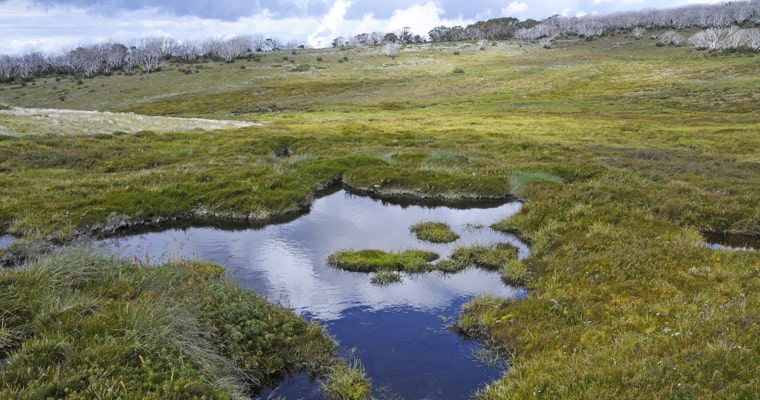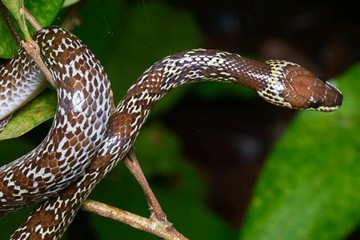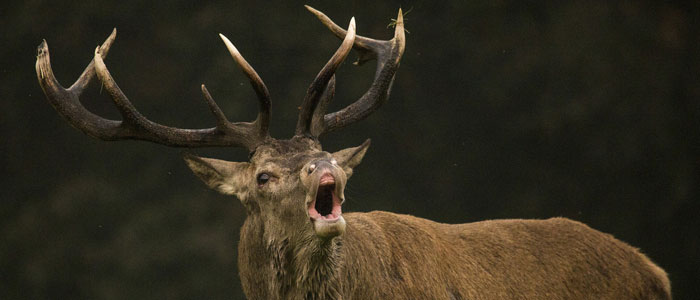
Feral animals threaten alpine sphagnum bog recovery
Alpine sphagnum bogs burnt in the 2019-20 bushfires won’t recover without protection from feral animals.

Alpine sphagnum bogs burnt in the 2019-20 bushfires won’t recover without protection from feral animals.

The federal government has opened up a new inquiry into the problem of feral and domestic cats in Australia.

Australia’s native lizards and snakes at huge risk from a slew of weeds, foxes, cats, feral deer, wolf snakes and other pest species.

The Invasive Species Council welcomes the Victorian Supreme Court’s decision to protect the Alpine National Park from growing horse impacts but is concerned the possibility of further legal action will delay the inevitable.

Those opposed to action on Victoria’s feral horse problem are back in court today, a last ditch effort to delay the inevitable.

Parks Victoria will fully reinstate its feral horse control efforts to help limit escalating horse damage in the bushfire affected Australian Alps after success in a federal court case.

Native species killed or stressed by climate change will all too often be replaced by weeds and feral animals or infected by exotic diseases.

Enviromental Health Australia would be a national body dedicated to environmental biosecurity and tackling Australia’s most pressing environmental threats.

The Tasmanian government must develop a comprehensive feral deer management strategy that reduces the destructive impacts of deer and protects the environment and farmers.

Australian Senate inquiry told feral deer are a destructive, invasive feral pest species that are multiplying out of control.

Australia has to be ready to bounce back from the coronavirus pandemic and a jobs-rich conservation and land management program could be just the ticket.

A post-bushfire plan to remove feral horses from three areas in Kosciuszko National Park is an important step towards recovery.

New aerial footage and eyewitness accounts from iconic Kosciuszko National Park reveals horrific fire damage and the survival of huge numbers of feral horses now pushing threatened species closer to extinction,

Volunteer firefighter and wildlife carer calls for all-out attack on feral animals in fire zones scorched by this summer’s catastrophic bushfires.
Efforts to save Australian wildlife from the impacts of catastrophic bushfires will fail unless the control of foxes, feral cats, horses and deer are a major part of wildlife disaster recovery plans, the Invasive Species Council warned today.

Alpine sphagnum bogs burnt in the 2019-20 bushfires won’t recover without protection from feral animals.

The federal government has opened up a new inquiry into the problem of feral and domestic cats in Australia.

Australia’s native lizards and snakes at huge risk from a slew of weeds, foxes, cats, feral deer, wolf snakes and other pest species.

The Invasive Species Council welcomes the Victorian Supreme Court’s decision to protect the Alpine National Park from growing horse impacts but is concerned the possibility of further legal action will delay the inevitable.

Those opposed to action on Victoria’s feral horse problem are back in court today, a last ditch effort to delay the inevitable.

Parks Victoria will fully reinstate its feral horse control efforts to help limit escalating horse damage in the bushfire affected Australian Alps after success in a federal court case.

Native species killed or stressed by climate change will all too often be replaced by weeds and feral animals or infected by exotic diseases.

Enviromental Health Australia would be a national body dedicated to environmental biosecurity and tackling Australia’s most pressing environmental threats.

The Tasmanian government must develop a comprehensive feral deer management strategy that reduces the destructive impacts of deer and protects the environment and farmers.

Australian Senate inquiry told feral deer are a destructive, invasive feral pest species that are multiplying out of control.

Australia has to be ready to bounce back from the coronavirus pandemic and a jobs-rich conservation and land management program could be just the ticket.

A post-bushfire plan to remove feral horses from three areas in Kosciuszko National Park is an important step towards recovery.

New aerial footage and eyewitness accounts from iconic Kosciuszko National Park reveals horrific fire damage and the survival of huge numbers of feral horses now pushing threatened species closer to extinction,

Volunteer firefighter and wildlife carer calls for all-out attack on feral animals in fire zones scorched by this summer’s catastrophic bushfires.
Efforts to save Australian wildlife from the impacts of catastrophic bushfires will fail unless the control of foxes, feral cats, horses and deer are a major part of wildlife disaster recovery plans, the Invasive Species Council warned today.

Alpine sphagnum bogs burnt in the 2019-20 bushfires won’t recover without protection from feral animals.

The federal government has opened up a new inquiry into the problem of feral and domestic cats in Australia.

Australia’s native lizards and snakes at huge risk from a slew of weeds, foxes, cats, feral deer, wolf snakes and other pest species.

The Invasive Species Council welcomes the Victorian Supreme Court’s decision to protect the Alpine National Park from growing horse impacts but is concerned the possibility of further legal action will delay the inevitable.

Those opposed to action on Victoria’s feral horse problem are back in court today, a last ditch effort to delay the inevitable.

Parks Victoria will fully reinstate its feral horse control efforts to help limit escalating horse damage in the bushfire affected Australian Alps after success in a federal court case.

Native species killed or stressed by climate change will all too often be replaced by weeds and feral animals or infected by exotic diseases.

Enviromental Health Australia would be a national body dedicated to environmental biosecurity and tackling Australia’s most pressing environmental threats.

The Tasmanian government must develop a comprehensive feral deer management strategy that reduces the destructive impacts of deer and protects the environment and farmers.

Australian Senate inquiry told feral deer are a destructive, invasive feral pest species that are multiplying out of control.

Australia has to be ready to bounce back from the coronavirus pandemic and a jobs-rich conservation and land management program could be just the ticket.

A post-bushfire plan to remove feral horses from three areas in Kosciuszko National Park is an important step towards recovery.

New aerial footage and eyewitness accounts from iconic Kosciuszko National Park reveals horrific fire damage and the survival of huge numbers of feral horses now pushing threatened species closer to extinction,

Volunteer firefighter and wildlife carer calls for all-out attack on feral animals in fire zones scorched by this summer’s catastrophic bushfires.
Efforts to save Australian wildlife from the impacts of catastrophic bushfires will fail unless the control of foxes, feral cats, horses and deer are a major part of wildlife disaster recovery plans, the Invasive Species Council warned today.
Get our blog the Feral Herald delivered to your inbox.

The Invasive Species Council was formed in 2002 to seek stronger laws, policies and programs to protect nature from harmful pests, weeds and diseases.
The Invasive Species Council acknowledges the Traditional Custodians throughout Australia and their connections to land and sea. We pay our respect to their Elders past and present and extend that respect to all Aboriginal and Torres Strait Islander peoples today.
Our protected areas are being trashed, trampled, choked and polluted by an onslaught of invaders. Invasive species are already the overwhelming driver of our animal extinction rate, and are expected to cause 75 of the next 100 extinctions.
But you can help to turn this around and create a wildlife revival in Australia.
From numbats to night parrots, a tax-deductible donation today can help defend our wildlife against the threat of invasive weeds, predators, and diseases.
As the only national advocacy environment group dedicated to stopping this mega threat, your gift will make a big difference.
A silent crisis is unfolding across Australia. Every year, billions of native animals are hunted and killed by cats and foxes. Fire ants continue to spread and threaten human health. And the deadly strain of bird flu looms on the horizon. Your donation today will be used to put the invasive species threat in the media, make invasive species a government priority, ensure governments take rapid action to protect nature and our remarkable native wildlife from invasives-led extinction, death and destruction.
If you are having trouble submitting a form, please read this guide.
Please fill out the following form and one of our team will be in contact to assist as soon as possible. Please make sure to include any helpful information, such as the device you were using (computer, tablet or mobile phone) and if known, your browser (Mozilla Firefox, Chrome, Safari etc)
"*" indicates required fields
Dear Project Team,
[YOUR PERSONALISED MESSAGE WILL APPEAR HERE.]
I support the amendment to the Kosciuszko National Park Wild Horse Heritage Management Plan to allow our incredible National Parks staff to use aerial shooting as one method to rapidly reduce feral horse numbers. I want to see feral horse numbers urgently reduced in order to save the national park and our native wildlife that live there.
The current approach is not solving the problem. Feral horse numbers have rapidly increased in Kosciuszko National Park to around 18,000, a 30% jump in just the past 2 years. With the population so high, thousands of feral horses need to be removed annually to reduce numbers and stop our National Park becoming a horse paddock. Aerial shooting, undertaken humanely and safely by professionals using standard protocols, is the only way this can happen.
The government’s own management plan for feral horses states that ‘if undertaken in accordance with best practice, aerial shooting can have the lowest negative animal welfare impacts of all lethal control methods’.
This humane and effective practice is already used across Australia to manage hundreds of thousands of feral animals like horses, deer, pigs, and goats.
Trapping and rehoming of feral horses has been used in Kosciuszko National Park for well over a decade but has consistently failed to reduce the population, has delayed meaningful action and is expensive. There are too many feral horses in the Alps and not enough demand for rehoming for it to be relied upon for the reduction of the population.
Fertility control as a management tool is only effective for a small, geographically isolated, and accessible population of feral horses where the management outcome sought is to maintain the population at its current size. It is not a viable option to reduce the large and growing feral horse population in the vast and rugged terrain of Kosciuszko National Park.
Feral horses are trashing and trampling our sensitive alpine ecosystems and streams, causing the decline and extinction of native animals. The federal government’s Threatened Species Scientific Committee has stated that feral horses ‘may be the crucial factor that causes final extinction’ for 12 alpine species.
I recognise the sad reality that urgent and humane measures are necessary to urgently remove the horses or they will destroy the Snowies and the native wildlife that call the mountains home. I support a healthy national park where native species like the Corroboree Frog and Mountain Pygmy Possum can thrive.
Dear Project Team,
[YOUR PERSONALISED MESSAGE WILL APPEAR HERE.]
I support the amendment to the Kosciuszko National Park Wild Horse Heritage Management Plan to allow our incredible National Parks staff to use aerial shooting as one method to rapidly reduce feral horse numbers. I want to see feral horse numbers urgently reduced in order to save the national park and our native wildlife that live there.
The current approach is not solving the problem. Feral horse numbers have rapidly increased in Kosciuszko National Park to around 18,000, a 30% jump in just the past 2 years. With the population so high, thousands of feral horses need to be removed annually to reduce numbers and stop our National Park becoming a horse paddock. Aerial shooting, undertaken humanely and safely by professionals using standard protocols, is the only way this can happen.
The government’s own management plan for feral horses states that ‘if undertaken in accordance with best practice, aerial shooting can have the lowest negative animal welfare impacts of all lethal control methods’.
This humane and effective practice is already used across Australia to manage hundreds of thousands of feral animals like horses, deer, pigs, and goats.
Trapping and rehoming of feral horses has been used in Kosciuszko National Park for well over a decade but has consistently failed to reduce the population, has delayed meaningful action and is expensive. There are too many feral horses in the Alps and not enough demand for rehoming for it to be relied upon for the reduction of the population.
Fertility control as a management tool is only effective for a small, geographically isolated, and accessible population of feral horses where the management outcome sought is to maintain the population at its current size. It is not a viable option to reduce the large and growing feral horse population in the vast and rugged terrain of Kosciuszko National Park.
Feral horses are trashing and trampling our sensitive alpine ecosystems and streams, causing the decline and extinction of native animals. The federal government’s Threatened Species Scientific Committee has stated that feral horses ‘may be the crucial factor that causes final extinction’ for 12 alpine species.
I recognise the sad reality that urgent and humane measures are necessary to urgently remove the horses or they will destroy the Snowies and the native wildlife that call the mountains home. I support a healthy national park where native species like the Corroboree Frog and Mountain Pygmy Possum can thrive.